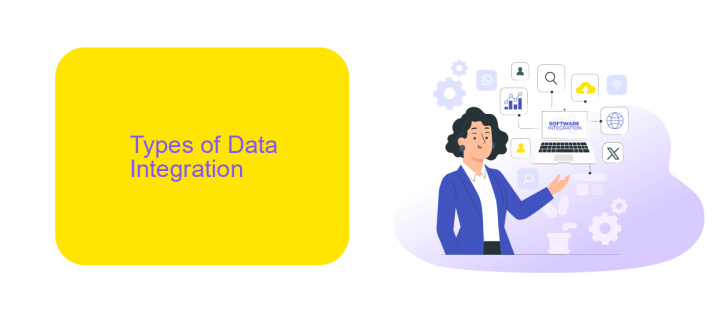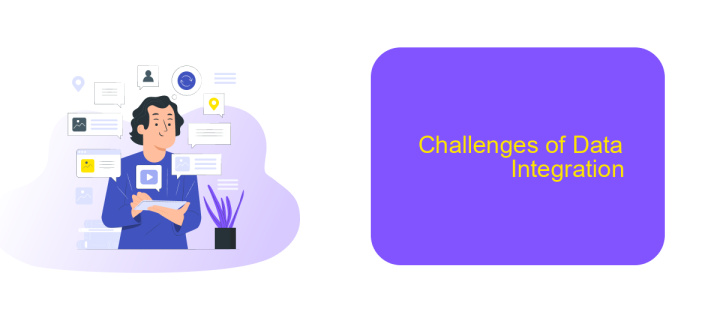Types of Data Integration
Data integration is a critical process in modern business operations, enabling the seamless combination of data from various sources to provide a unified view. This article explores the different types of data integration, including ETL (Extract, Transform, Load), ELT (Extract, Load, Transform), data virtualization, and data warehousing, highlighting their unique features and use cases. Understanding these methods is essential for effective data management and analytics.
Introduction to Data Integration
Data integration is the process of combining data from different sources to provide a unified view. This practice is crucial for organizations that rely on diverse datasets to make informed decisions. Effective data integration helps in improving data quality, reducing redundancy, and ensuring consistency across the organization.
- Data Consolidation: Merging data from multiple sources into a single repository.
- Data Propagation: Distributing data from one source to various target systems.
- Data Federation: Providing a virtual view of data from different sources without moving it.
Modern tools and services like ApiX-Drive facilitate seamless data integration by automating the process of connecting various applications and systems. ApiX-Drive allows users to set up integrations quickly and without any coding, making it accessible for businesses of all sizes. By leveraging such services, organizations can streamline their data workflows and focus on deriving actionable insights.
Types of Data Integration

Data integration is a crucial process that involves combining data from different sources to provide a unified view. There are several types of data integration, each with its unique approach and benefits. One common type is manual data integration, where data from various sources is manually collected and consolidated. This method is labor-intensive and prone to errors but can be useful for small-scale projects. Another type is middleware data integration, which uses middleware software to connect different systems and facilitate data exchange. This method is more efficient and reduces the risk of errors compared to manual integration.
A more advanced type is application-based integration, where specialized applications are used to integrate data across different systems. These applications often come with pre-built connectors and automation features, making the process faster and more reliable. For instance, services like ApiX-Drive offer robust tools for setting up and managing data integrations effortlessly. They provide a user-friendly interface and support for multiple platforms, ensuring seamless data flow. Lastly, there is data warehousing, which involves collecting and storing data in a centralized repository for easy access and analysis. This method is ideal for organizations that need to handle large volumes of data from various sources.
Benefits of Data Integration

Data integration offers numerous advantages for businesses, streamlining operations and enhancing decision-making processes. By consolidating data from disparate sources, companies can achieve a more comprehensive view of their operations, leading to improved efficiency and accuracy.
- Enhanced Data Quality: Integrating data from various sources helps eliminate inconsistencies and redundancies, ensuring a single source of truth.
- Improved Decision-Making: With a unified data set, businesses can perform more accurate analyses, leading to better strategic decisions.
- Operational Efficiency: Automation of data integration processes reduces manual effort, saving time and resources.
- Scalability: Data integration solutions like ApiX-Drive enable seamless scaling as business needs grow, accommodating increasing data volumes without additional complexity.
- Real-Time Insights: Integrated data systems provide real-time insights, allowing businesses to respond swiftly to market changes and customer demands.
Utilizing services such as ApiX-Drive can significantly simplify the data integration process, offering user-friendly interfaces and robust automation capabilities. This not only enhances the overall efficiency but also ensures that the integrated data is reliable and up-to-date, empowering businesses to maintain a competitive edge.
Challenges of Data Integration

Integrating data from multiple sources poses several challenges that can hinder the effectiveness of data-driven decision-making. One of the primary issues is the inconsistency in data formats and structures, which makes it difficult to consolidate information seamlessly.
Another significant challenge is ensuring data quality and accuracy. Data from different sources may have discrepancies, missing values, or errors that need to be addressed before integration. Additionally, maintaining data security and privacy during the integration process is crucial, especially when dealing with sensitive information.
- Data format and structure inconsistencies
- Ensuring data quality and accuracy
- Maintaining data security and privacy
- Scalability and performance issues
To overcome these challenges, businesses can leverage integration platforms like ApiX-Drive. This service simplifies the process by providing tools to automate data transfers, ensuring data consistency and quality. Moreover, ApiX-Drive offers robust security measures to protect sensitive information, making the integration process more efficient and reliable.
Conclusion: The Future of Data Integration
As we look to the future of data integration, the landscape is set to evolve dramatically with advancements in technology and growing business demands. The integration of disparate data sources will become more seamless, driven by the increasing adoption of cloud-based solutions and AI-driven tools. These innovations will enable organizations to gain real-time insights and make data-driven decisions with greater accuracy and speed.
Moreover, services like ApiX-Drive will play a crucial role in simplifying the setup and management of data integrations. By providing user-friendly interfaces and automated workflows, such platforms will empower businesses to connect various applications and data sources without the need for extensive technical expertise. As a result, companies will be able to focus more on leveraging their integrated data to drive growth and innovation, rather than getting bogged down by the complexities of integration processes.
FAQ
What are the main types of data integration?
How does application integration work?
What is data consolidation?
Can you explain data virtualization?
How can I automate and set up data integrations?
Apix-Drive is a simple and efficient system connector that will help you automate routine tasks and optimize business processes. You can save time and money, direct these resources to more important purposes. Test ApiX-Drive and make sure that this tool will relieve your employees and after 5 minutes of settings your business will start working faster.

